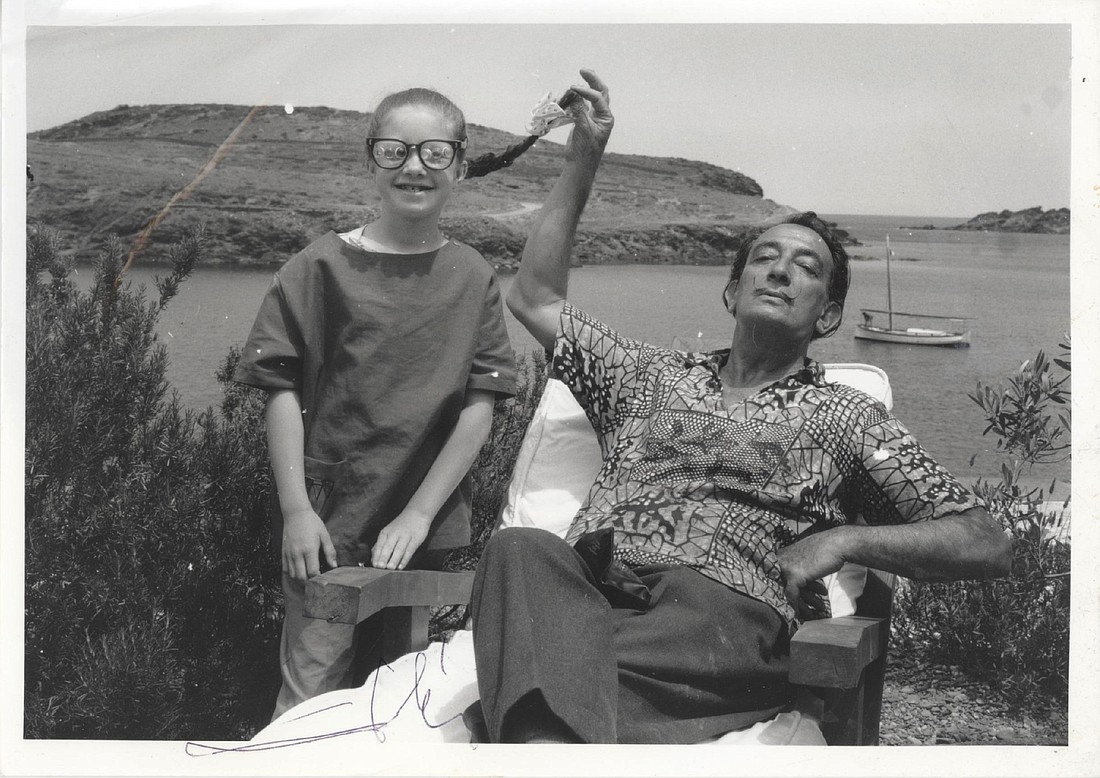- July 9, 2025
-
-
Loading

Sometimes nonparental figures can be just as influential as the people who raise us.
For Christine Argillet, that individual was Salvador Dali.
Argillet, daughter of Dali’s publisher and close personal friend Pierre Argillet, grew up with the artist as a constant figure in her life. After her father died in 2011 and she inherited his collection of largely unknown Dali works, she decided to exhibit and sell much of the accumulated art.
“I had this dilemma; I didn’t know what to do with it, but I felt that I had a responsibility,” Argillet says. “Because having art in a vault means nothing for anyone.”
Now, “Salvador Dali: The Argillet Collection” is coming to Chasen Galleries in Sarasota for art collectors and admirers alike to enjoy (and purchase if they have at least $4,500 to spare).
“I think the availability of old masters works are becoming more limited — there’s a big demand for this type of work,” says gallery owner Andrew Chasen. “He (Dali) was such a unique character, and his work stands by itself. Nobody else even stands close.”
When she thinks back to the summers she spent next door to Dali in her summer home in Port Lligat, in Catalonia, Spain, Argillet remembers a hardworking man with a mischievous, fun-loving spirit.
She says Dali was a whimsical and charming man who always made her laugh, and he especially loved playing tricks on people.
“He was someone truly free, and this sense of freedom was something you could see any time of the day when you were with him.”
This freedom influenced Argillet retrospectively, she says, as it did countless other art enthusiasts. From furniture making to haute couture, she says artists from varying disciplines have viewed the collection and told her Dali influenced their work in some way.
Argillet says this collection is unique in that it features many works for which Dali was not particularly known. Few people are aware, for example, that he created many tapestries, etchings and drawings throughout his career, and that’s what the collection comprises.
Since bringing the collection on the road, Argillet says it’s dwindled in size, but she’s happy to see the pieces go to homes where they can be appreciated daily.
“People either love his work or hate his work; he’s not someone who makes people indifferent,” Argillet says.
His success is funny, she points out, because he wasn’t always widely known. Dali was in a popular commercial for Lanvin chocolate in the 1970s (in which his famous moustache goes “fou,” crazy, and moves on its own) when Argillet was growing up. She says children on the streets of Paris would see him and recognize him for the commercial rather than his groundbreaking artwork.
Now, people see Argillet’s collection and say they thought they were familiar with Dali’s work, but they’re leaving with a more complete understanding of his skill set.
Although she once thought she too knew everything about Dali’s work, she’s come to realize how much more she has to learn.
“To this day we haven’t yet uncovered all the different aspects he worked with during his life,” Argillet says. “He was a workaholic … He was always working on a new project.”
Asked why Dali is a “master” worthy of a position in this Spanish Masters series at Chasen, Argillet notes that it wasn’t just his skillful technique that makes him notable. It was his expression of a dreamlike, surrealist vision he achieved by respecting the craft but also bringing a new imagination into a different domain of the movement.
“He was kind of the Leonardo Da Vinci of the 20th century.”